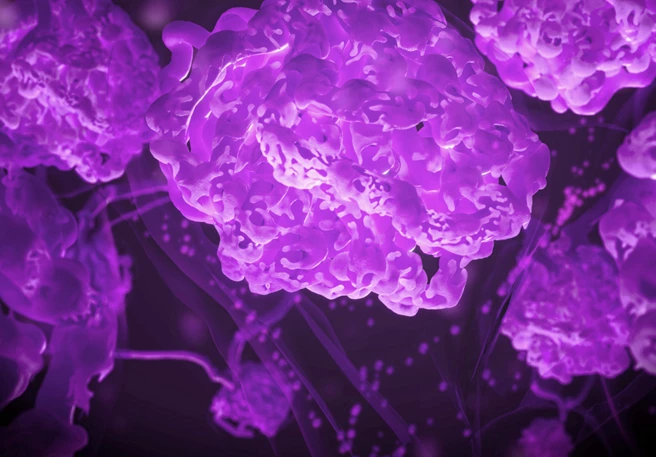
IgAN results in gradual deterioration of renal function
In the early stages, IgA Nephropathy is frequently asymptomatic and, in many cases, can remain undetected until there is a noticeable impairment of renal function.1 It is thus often the case that the disease is diagnosed by chance. Urine abnormalities that can be an indication of the presence of IgA Nephropathy, such as haematuria and proteinuria, are often only noticed by a general practitioner during a routine examination.2
At time of diagnosis, more than 50% of those affected have a reduced GFR.
Distribution of patients with IgA Nephropathy by eGFR and CKD stages at time of diagnosis

CKD: chronic kidney disease; eGFR: estimated glomerular filtration rate; IgAN: immunoglobulin A Nephropathy; MDRD: modification of diet in renal disease
*Distribution of Chinese patients by their CKD classification per the guidelines of the Kidney Disease Outcomes Quality Initiative (KDOQI) at baseline using the MDRD formula.
Adapted from: Fraser SD et al. (2016)3; Le W et al. (2012).4
How fast does IgA Nephropathy progress?
The progression of IgA Nephropathy can differ greatly from individual to individual. Some of those affected suffer from a mild form only, in which their renal function is retained. Ultimately, 25-30% of those with IgA nephropathy develop end-stage renal disease within 20-25 years of the first onset of the disease.5
Prevalence of end-stage renal disease in patients with IgA Nephropathy over time*,5,6
0
5 years
0
10 years
0
15 years
0
20-25 years
*Progression rates can vary due to regional differences with regard to local biopsy guidelines.7
There are several risk factors that determine progression of IgA Nephropathy to end-stage renal disease.

Huang PP et al. (2019)8; Zhang YM et al. (2017).9
There are various genetic- and environmental related risk factors that increase progression of IgA Nephropathy until it finally manifests as end-stage renal disease. For example, a history of (excessive) alcohol consumption and lack of physical exercise have been identified as independent risk factors for the development of end-stage renal disease. In addition, low estimated glomerular filtration rate (eGFR) and a high level of proteinuria in those with IgAN at time of biopsy are also associated with an increased risk of end-stage renal disease.
Learn more about IgAN
References
- Lafayette RA, Kelepouris E. Immunoglobulin A Nephropathy: Advances in Understanding of Pathogenesis and Treatment. Am J Nephrol 2018; 47(Suppl 1): 43–52.
- National Institute of Diabetes and Digestive and Kidney Diseases. IgA Nephropathy, under: https://www.niddk.nih.gov/health-information/kidney-disease/iga-nephropathy (last accessed: February 2022).
- Fraser SD et al. Chronic kidney disease: identification and management in primary care. Pragmat Obs Res 2016; 7: 21–32.
- Le W et al. Long-term renal survival and related risk factors in patients with IgA Nephropathy: results from a cohort of 1155 cases in a Chinese adult population. Nephrol Dial Transplant 2012; 27(4): 1479–1485.
- Kidney Disease: Improving Global Outcomes (KDIGO) Glomerular Diseases Work Group. KDIGO 2021 Clinical Practice Guideline for the Management of Glomerular Diseases. Kidney Int 2021; 100(4S): 1–276.
- Schena FP. A retrospective analysis of the natural history of primary IgA Nephropathy worldwide. Am J Med 1990; 89(2): 209–215.
- Rodrigues JC, Haas M, Reich HN. IgA Nephropathy. Clin J Am Soc Nephrol 2017; 12(4): 677–686.
- Huang PP et al. Association between lifestyle, gender and risk for developing end-stage renal failure in IgA Nephropathy: a case-control study within 10 years. Renal Fail 2019; 41(1): 914–920.
- Zhang YM et al. What Genetics Tells Us About the Pathogenesis of IgA Nephropathy: The Role of Immune Factors and Infection. Kidney Int Rep 2017; 2(3): 318–331.





